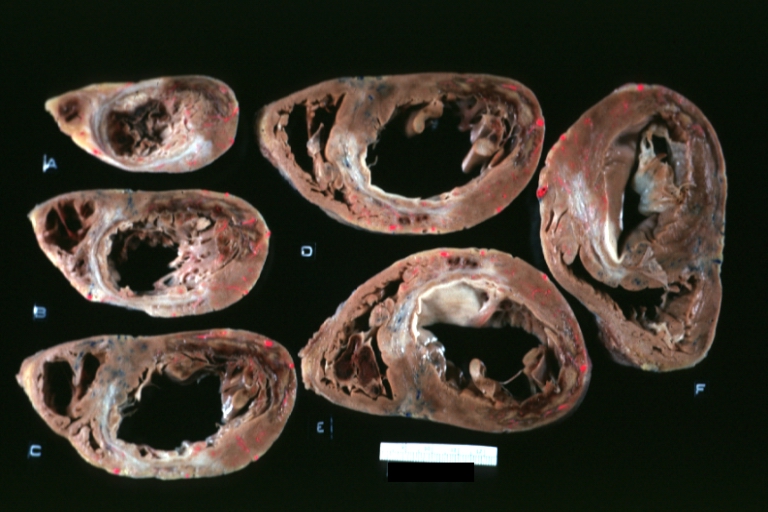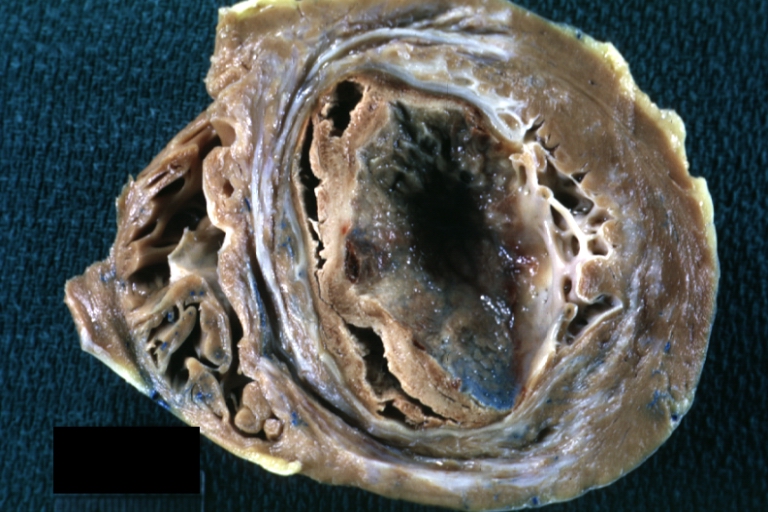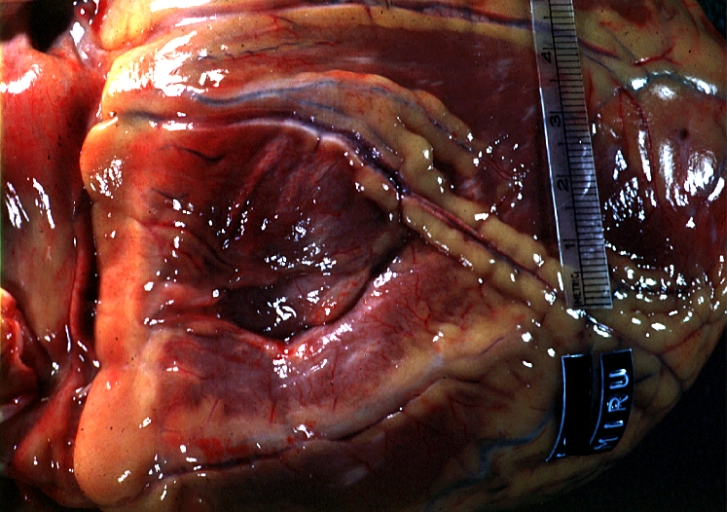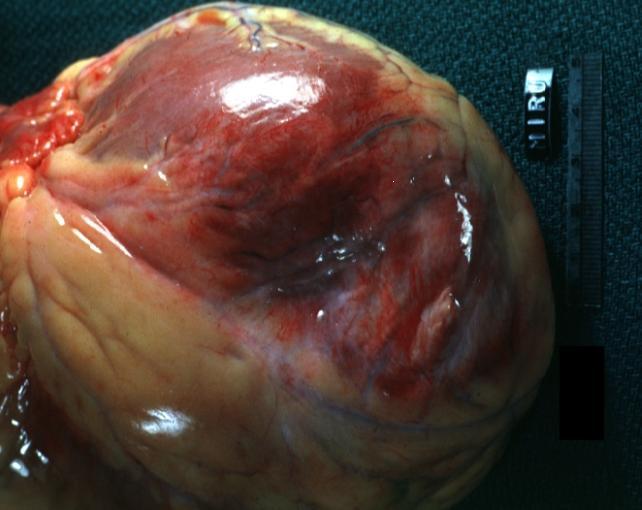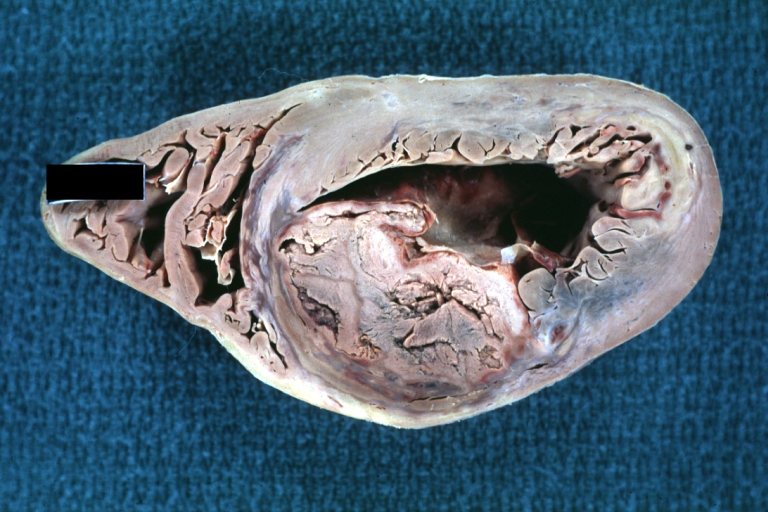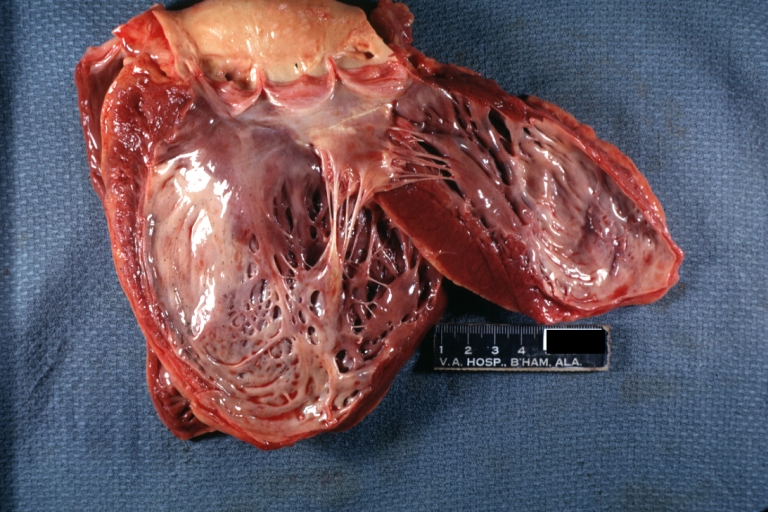ST elevation myocardial infarction gross pathology: Difference between revisions
Ochuko Ajari (talk | contribs) No edit summary |
m (Bot: Removing from Primary care) |
||
| (One intermediate revision by one other user not shown) | |||
| Line 4: | Line 4: | ||
==Gross Pathology== | ==Gross Pathology== | ||
Myocardial infarction can be classified temporally from clinical and other features, as well as according to the pathological appearance as:<ref name="pmid17951284">{{cite journal |author=Thygesen K, Alpert JS, White HD, ''et al'' |title=Universal definition of myocardial infarction |journal=Circulation |volume=116 |issue=22 |pages=2634–53 |year=2007 |month=November |pmid=17951284 |doi=10.1161/CIRCULATIONAHA.107.187397 |url=}}</ref> | Myocardial infarction can be classified temporally from clinical and other features, as well as according to the [[pathological]] appearance as:<ref name="pmid17951284">{{cite journal |author=Thygesen K, Alpert JS, White HD, ''et al'' |title=Universal definition of myocardial infarction |journal=Circulation |volume=116 |issue=22 |pages=2634–53 |year=2007 |month=November |pmid=17951284 |doi=10.1161/CIRCULATIONAHA.107.187397 |url=}}</ref> | ||
* Evolving phase of myocardial infarction: (>6 hours), | * Evolving phase of myocardial infarction: (>6 hours), | ||
* Acute phase of myocardial infarction: (6 hours – 7 days), | * Acute phase of myocardial infarction: (6 hours – 7 days), | ||
| Line 11: | Line 11: | ||
Time from Onset and Gross Morphologic Finding Relations: | Time from Onset and Gross Morphologic Finding Relations: | ||
* 18 - 24 hours: Pallor of myocardium | * 18 - 24 hours: Pallor of [[myocardium]] | ||
* 24 - 72 hours: Pallor with some hyperemia | * 24 - 72 hours: Pallor with some [[hyperemia]] | ||
* 3 - 7 days: Hyperemic border with central yellowing | * 3 - 7 days: [[Hyperemic flow|Hyperemic]] border with central yellowing | ||
* 10 - 21 days: Maximally yellow and soft with vascular margins | * 10 - 21 days: Maximally yellow and soft with [[vascular]] margins | ||
* 7 weeks: White fibrosis | * 7 weeks: White [[fibrosis]] | ||
===Images=== | ===Images=== | ||
| Line 21: | Line 21: | ||
{| align="center" | {| align="center" | ||
! | ! | ||
|-valign="top" | |- valign="top" | ||
| [[Image:Image15001.jpg|left|thumb|400px|Acute Myocardial infarction.]] | | [[Image:Image15001.jpg|left|thumb|400px|Acute Myocardial infarction.]] | ||
| Line 29: | Line 29: | ||
{| align="center" | {| align="center" | ||
! | ! | ||
|-valign="top" | |- valign="top" | ||
| [[Image:Image15973.jpg|left|thumb|400px|Acute Myocardial infarction; Posterior wall.]] | | [[Image:Image15973.jpg|left|thumb|400px|Acute Myocardial infarction; Posterior wall.]] | ||
| Line 37: | Line 37: | ||
{| align="center" | {| align="center" | ||
! | ! | ||
|-valign="top" | |- valign="top" | ||
| [[Image:Image919.JPG|left|thumb|400px|Acute myocardial infarction. Multi sliced view.]] | | [[Image:Image919.JPG|left|thumb|400px|Acute myocardial infarction. Multi sliced view.]] | ||
| Line 45: | Line 45: | ||
{| align="center" | {| align="center" | ||
! | ! | ||
|-valign="top" | |- valign="top" | ||
| [[Image:Old MI.jpg|left|thumb|400px|Old myocardial infarction with fibrosis and apical thrombus.]] | | [[Image:Old MI.jpg|left|thumb|400px|Old myocardial infarction with fibrosis and apical thrombus.]] | ||
| Line 53: | Line 53: | ||
{| align="center" | {| align="center" | ||
! | ! | ||
|-valign="top" | |- valign="top" | ||
| [[Image:AMI with epicardial fibrin.jpg|left|thumb|400px|Acute myocardial infarction with epicardial fibrin.]] | | [[Image:AMI with epicardial fibrin.jpg|left|thumb|400px|Acute myocardial infarction with epicardial fibrin.]] | ||
| Line 61: | Line 61: | ||
{| align="center" | {| align="center" | ||
! | ! | ||
|-valign="top" | |- valign="top" | ||
| [[Image:MI and DM.jpg|left|thumb|400px|Myocardial infarction; free wall, 6 days old, in a patient with [[diabetes mellitus]] and [[hypertension]].]] | | [[Image:MI and DM.jpg|left|thumb|400px|Myocardial infarction; free wall, 6 days old, in a patient with [[diabetes mellitus]] and [[hypertension]].]] | ||
| Line 69: | Line 69: | ||
{| align="center" | {| align="center" | ||
! | ! | ||
|-valign="top" | |- valign="top" | ||
| [[Image:Anterior surface in APMI.jpg|left|thumb|400px|Anterior surface of the heart in patient with acute posterior myocardial infarction.]] | | [[Image:Anterior surface in APMI.jpg|left|thumb|400px|Anterior surface of the heart in patient with acute posterior myocardial infarction.]] | ||
| Line 77: | Line 77: | ||
{| align="center" | {| align="center" | ||
! | ! | ||
|-valign="top" | |- valign="top" | ||
| [[Image:Old MI with aneurysm.jpg|left|thumb|400px|Old myocardial infarction with aneurysm formation]] | | [[Image:Old MI with aneurysm.jpg|left|thumb|400px|Old myocardial infarction with aneurysm formation]] | ||
| Line 85: | Line 85: | ||
{| align="center" | {| align="center" | ||
! | ! | ||
|-valign="top" | |- valign="top" | ||
| [[Image:AMI mural thrombus 2.jpg|left|thumb|400px|Myocardial Infarction: Gross; An excellent example of all ventricular slices in case of healing posterior and healed anterior myocardial infarction. A mural thrombus at apex.]] | | [[Image:AMI mural thrombus 2.jpg|left|thumb|400px|Myocardial Infarction: Gross; An excellent example of all ventricular slices in case of healing posterior and healed anterior myocardial infarction. A mural thrombus at apex.]] | ||
| Line 93: | Line 93: | ||
{| align="center" | {| align="center" | ||
! | ! | ||
|-valign="top" | |- valign="top" | ||
| [[Image:Posterior wall aneurysm.jpg|left|thumb|400px|Myocardial Infarction: Gross; External view showing indented area represent small posterior wall aneurysm. ]] | | [[Image:Posterior wall aneurysm.jpg|left|thumb|400px|Myocardial Infarction: Gross; External view showing indented area represent small posterior wall aneurysm. ]] | ||
| Line 101: | Line 101: | ||
{| align="center" | {| align="center" | ||
! | ! | ||
|-valign="top" | |- valign="top" | ||
| [[Image:Mural thrombus and healed MI.jpg|left|thumb|400px|Myocardial Infarction: Gross; healed lesion with mural thrombus (an excellent example)]] | | [[Image:Mural thrombus and healed MI.jpg|left|thumb|400px|Myocardial Infarction: Gross; healed lesion with mural thrombus (an excellent example)]] | ||
| [[Image:Myocardial infarct scar.jpg|left|thumb|400px|Myocardial Infarct Scar: Gross; natural color; very large old anterior infarct with wall thinning, mild aneurysm and endocardial thickening. A typical lesion.]] | | [[Image:Myocardial infarct scar.jpg|left|thumb|400px|Myocardial Infarct Scar: Gross; natural color; very large old anterior infarct with wall thinning, mild aneurysm and endocardial thickening. A typical lesion.]] | ||
|} | |} | ||
<br clear="left"/> | <br clear="left" /> | ||
==References== | ==References== | ||
{{reflist|2}} | {{reflist|2}} | ||
{{WikiDoc Help Menu}} | |||
{{WS}} | |||
[[Category:Disease]] | [[Category:Disease]] | ||
| Line 116: | Line 118: | ||
[[Category:Intensive care medicine]] | [[Category:Intensive care medicine]] | ||
[[Category:Emergency medicine]] | [[Category:Emergency medicine]] | ||
[[Category:Mature chapter]] | [[Category:Mature chapter]] | ||
[[Category:Pathology]] | [[Category:Pathology]] | ||
Latest revision as of 00:17, 30 July 2020
|
ST Elevation Myocardial Infarction Microchapters |
|
Differentiating ST elevation myocardial infarction from other Diseases |
|
Diagnosis |
|
Treatment |
|
|
Case Studies |
|
ST elevation myocardial infarction gross pathology On the Web |
|
ST elevation myocardial infarction gross pathology in the news |
|
Directions to Hospitals Treating ST elevation myocardial infarction |
|
Risk calculators and risk factors for ST elevation myocardial infarction gross pathology |
Editor-In-Chief: C. Michael Gibson, M.S., M.D. [1]; Associate Editor(s)-in-Chief: Cafer Zorkun, M.D., Ph.D. [2]
Gross Pathology
Myocardial infarction can be classified temporally from clinical and other features, as well as according to the pathological appearance as:[1]
- Evolving phase of myocardial infarction: (>6 hours),
- Acute phase of myocardial infarction: (6 hours – 7 days),
- Healing phase of myocardial infarction: (7–28 days),
- Healed phase of myocardial infarction: (29 days and beyond).
Time from Onset and Gross Morphologic Finding Relations:
- 18 - 24 hours: Pallor of myocardium
- 24 - 72 hours: Pallor with some hyperemia
- 3 - 7 days: Hyperemic border with central yellowing
- 10 - 21 days: Maximally yellow and soft with vascular margins
- 7 weeks: White fibrosis
Images
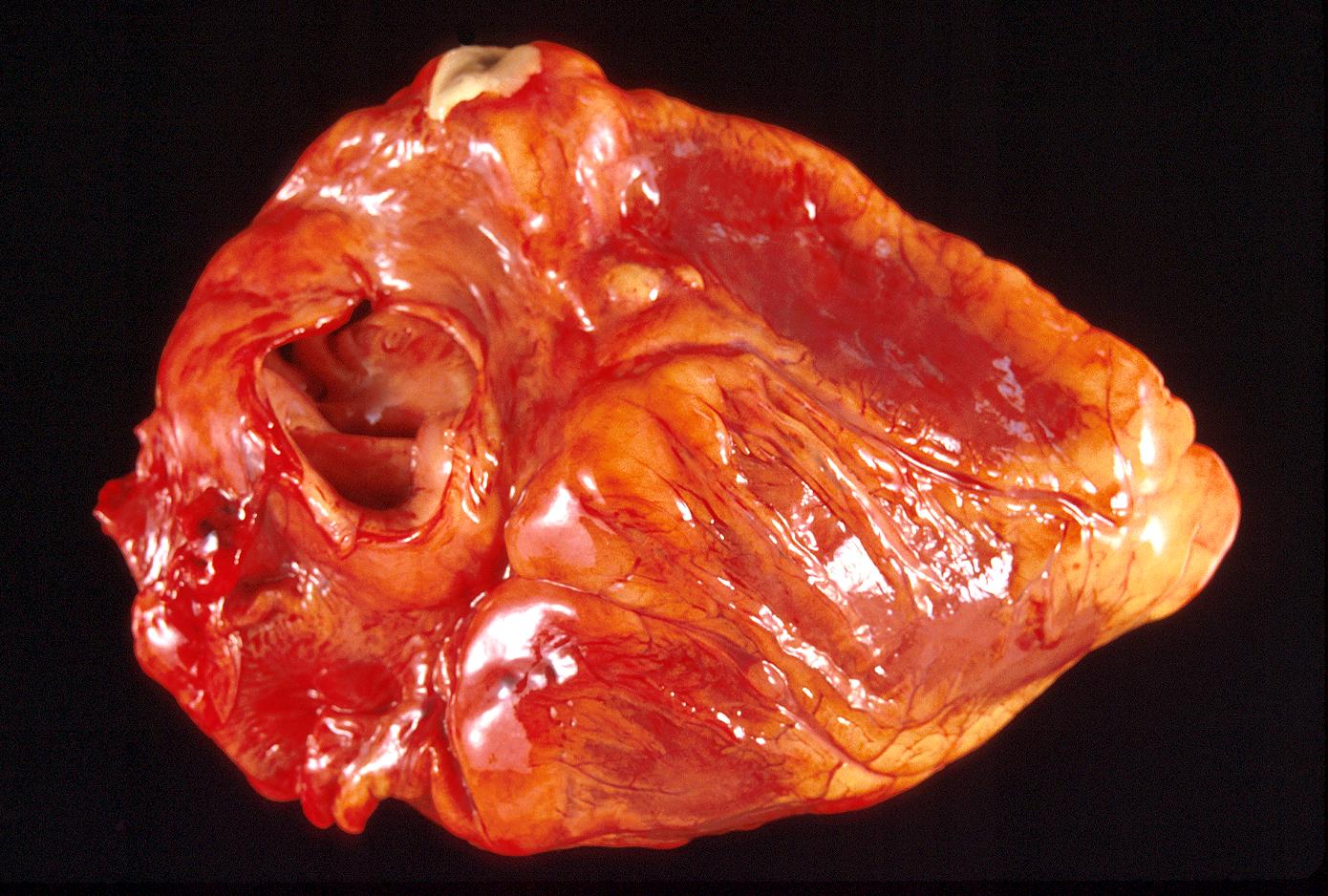 |
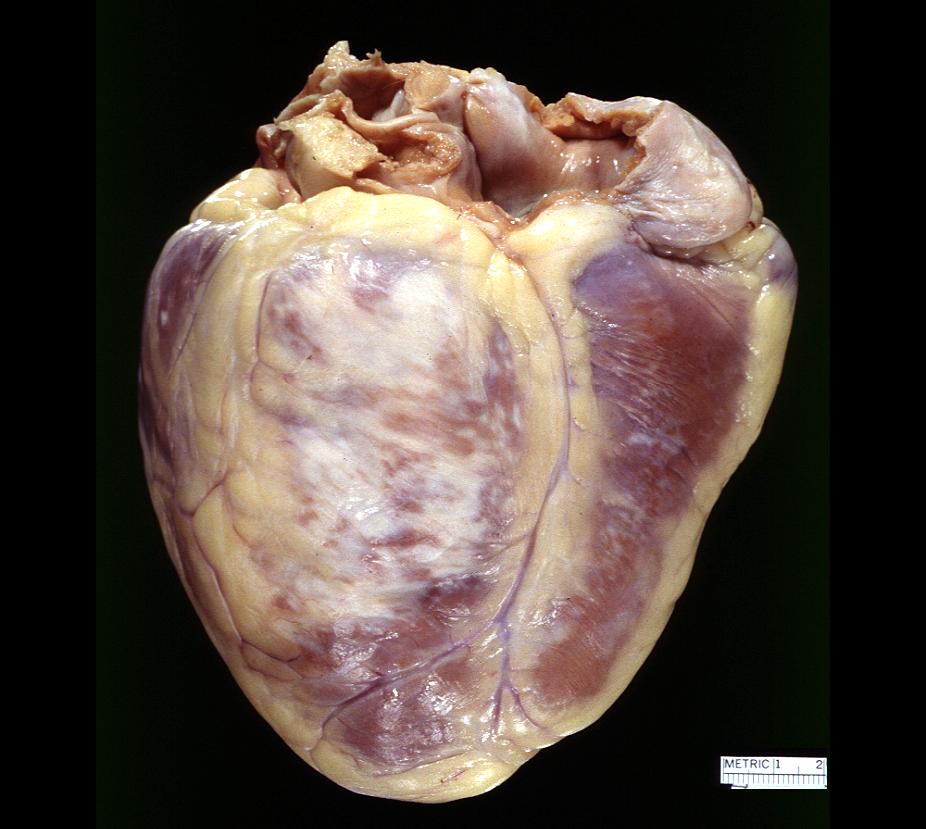 |
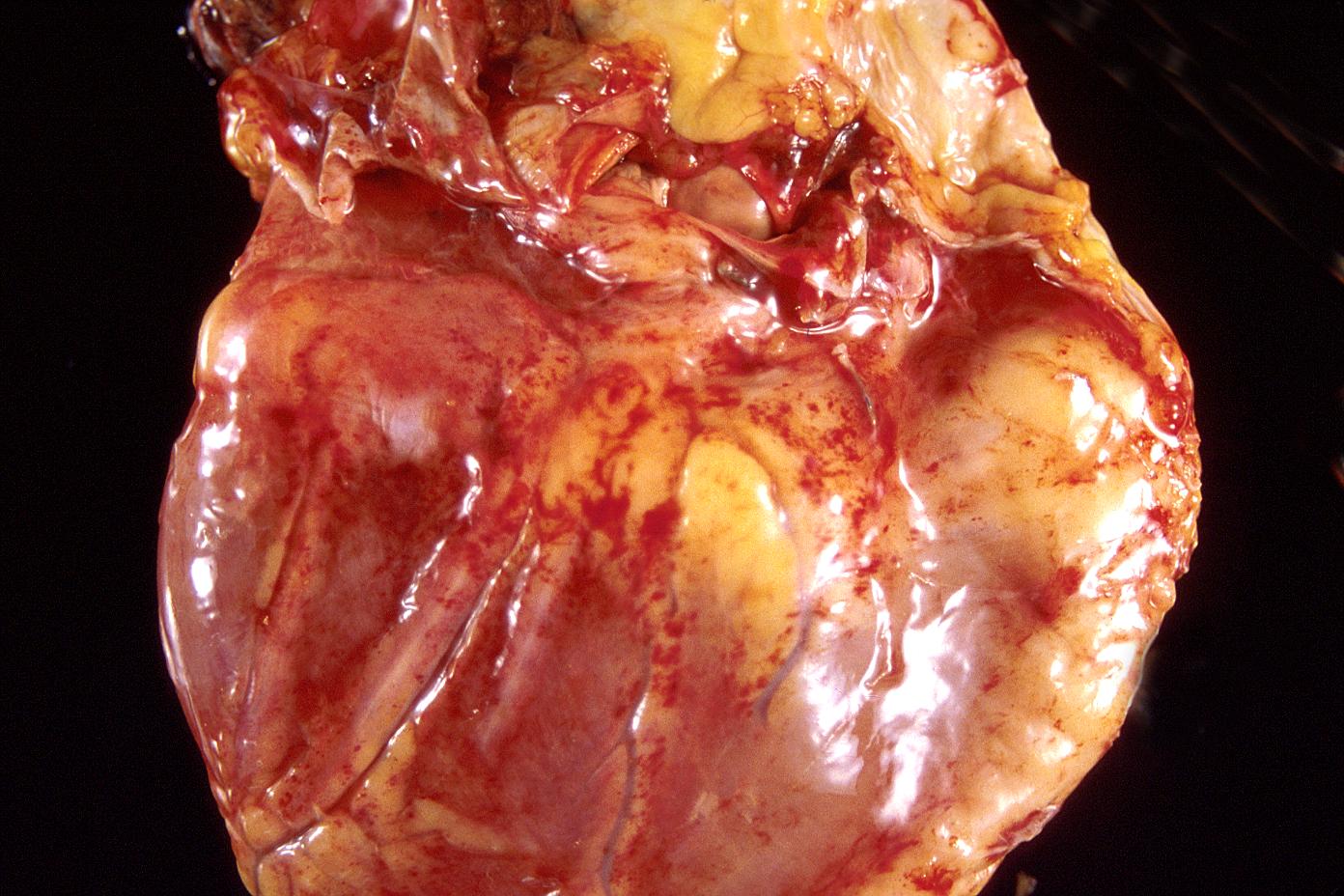 |
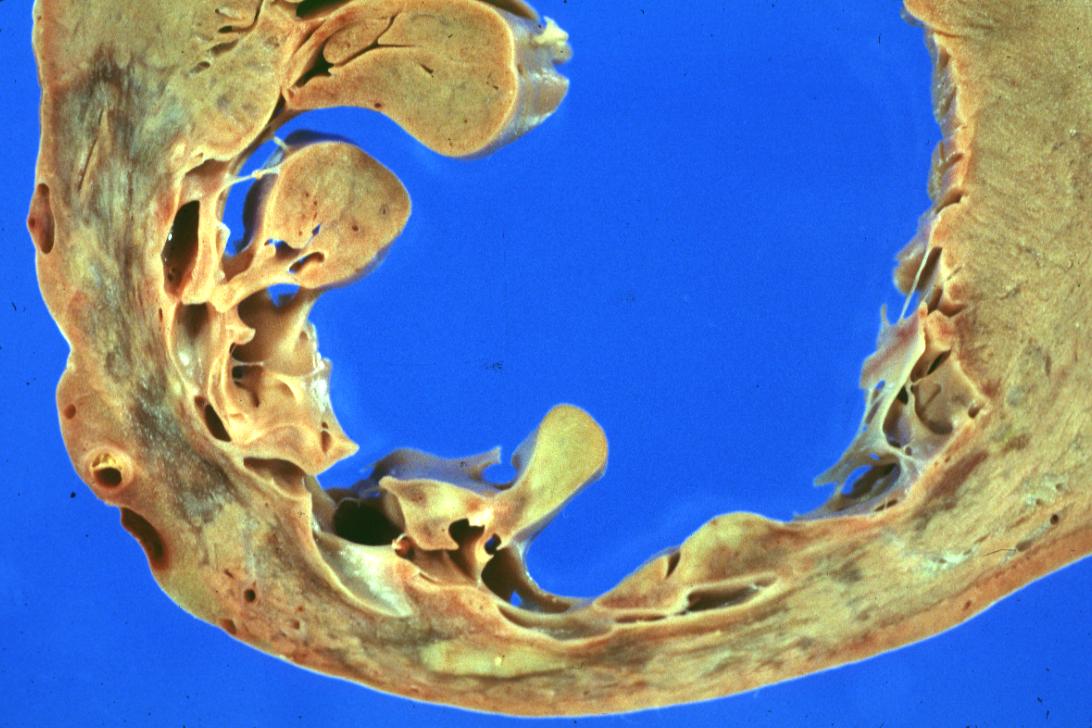 |
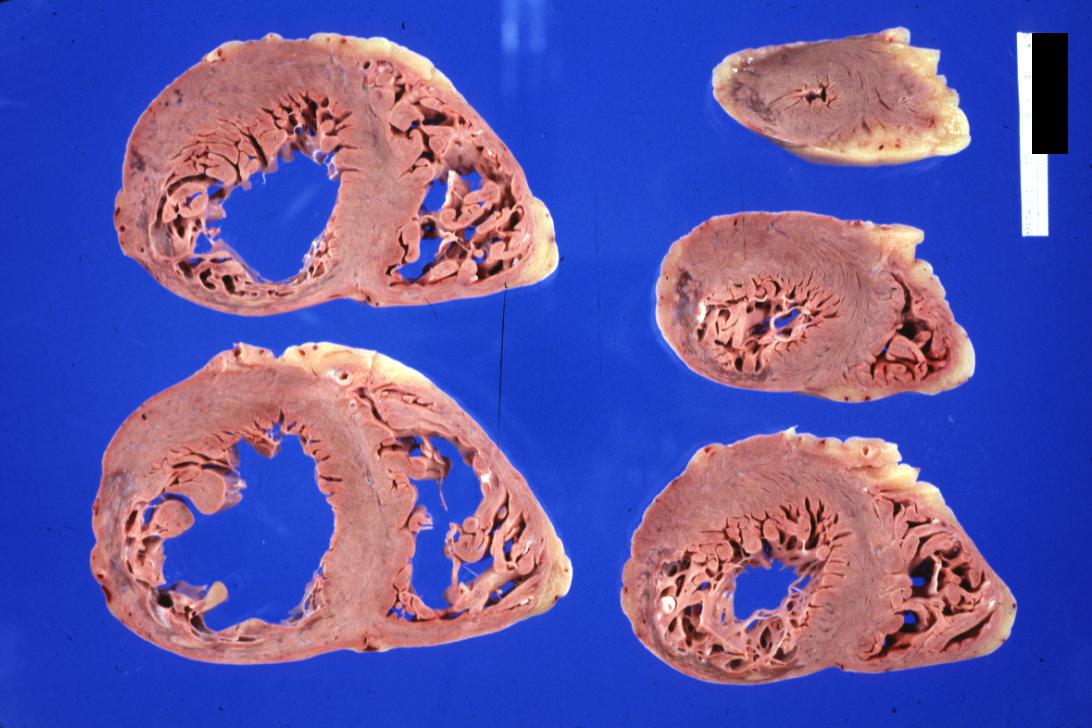 |
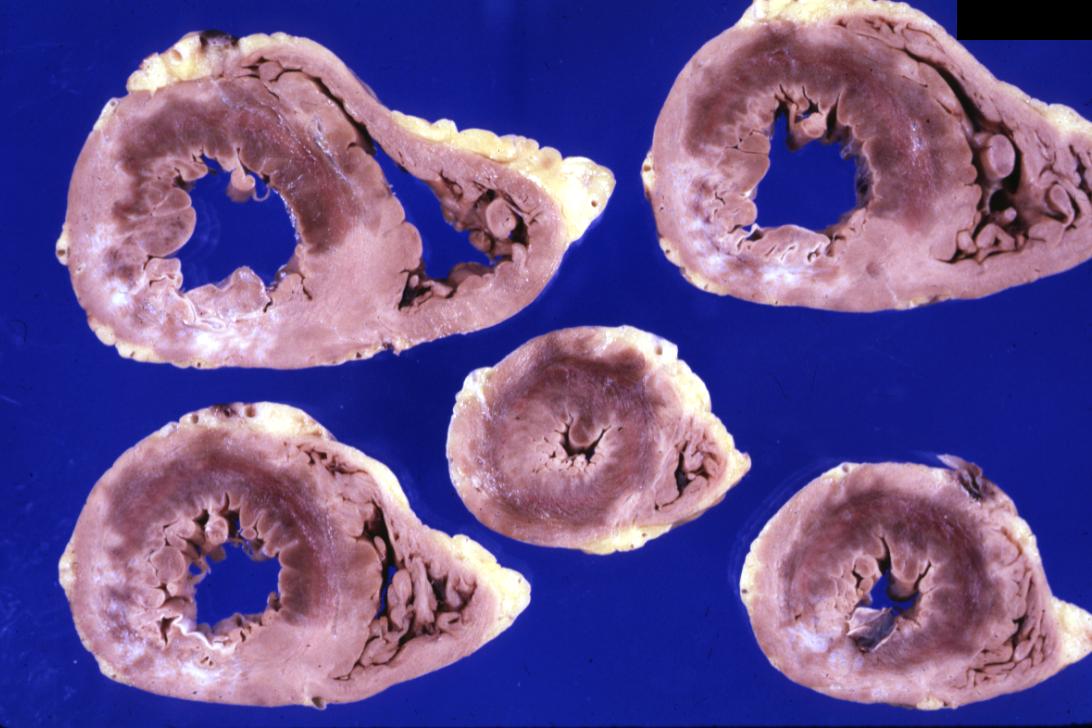 |
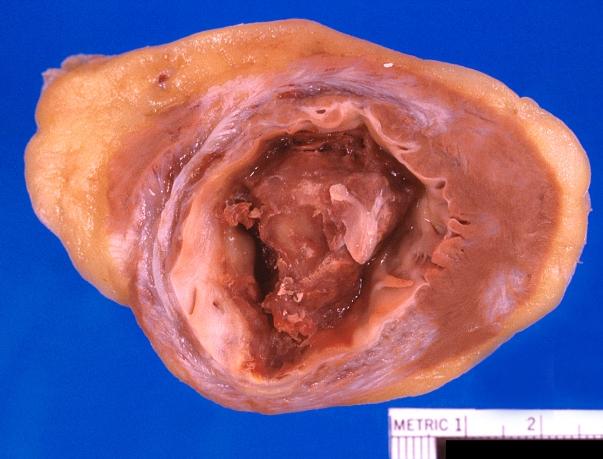 |
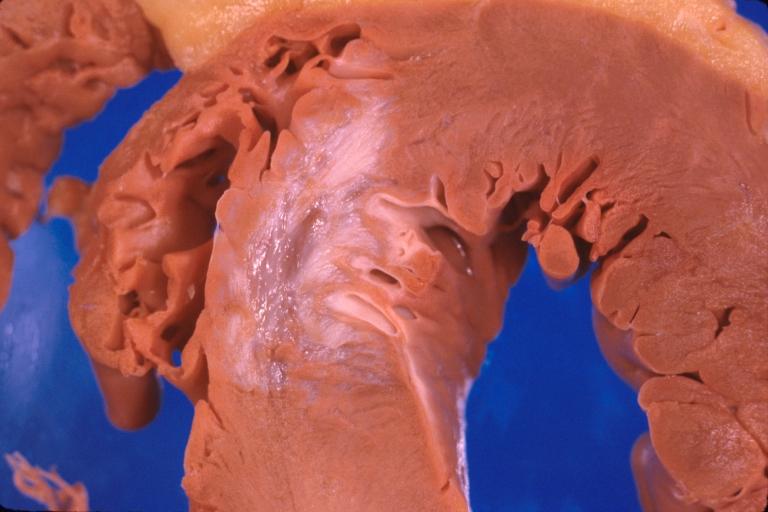 |
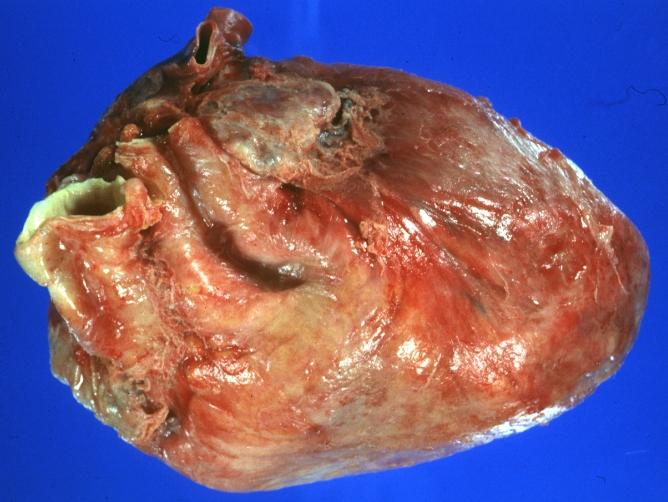 |
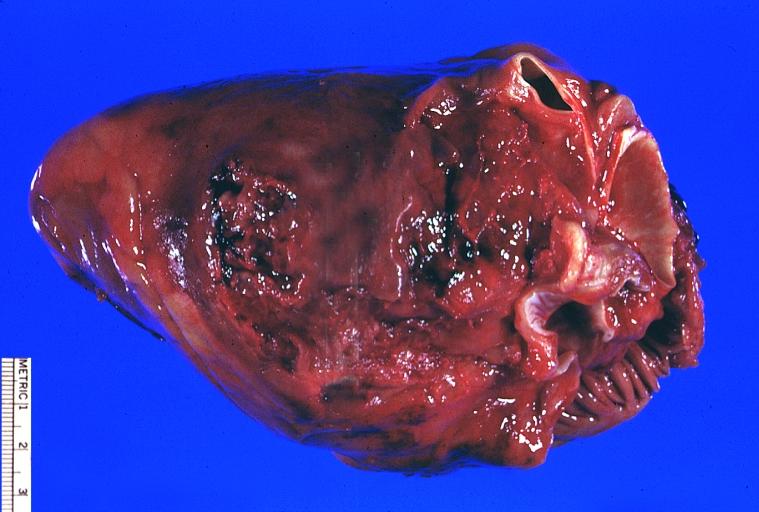 |
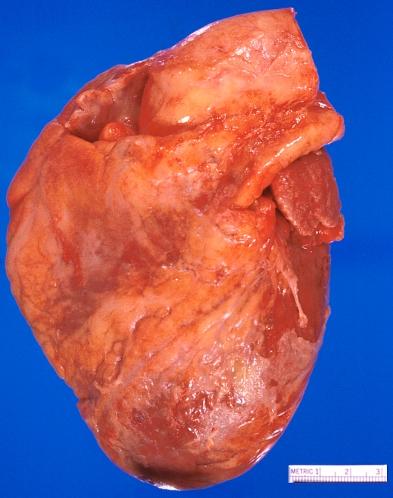 |
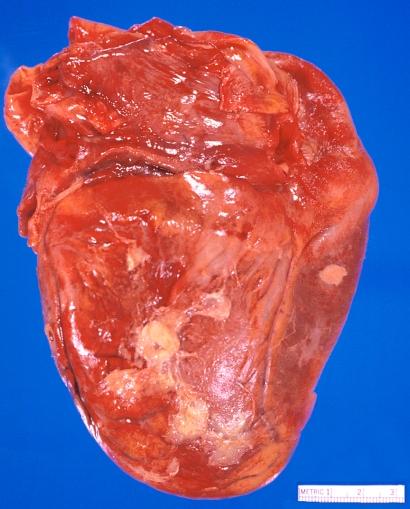 |
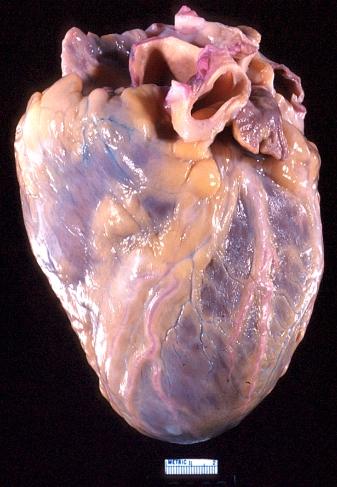 |
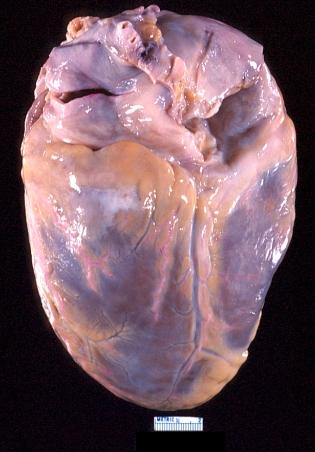 |
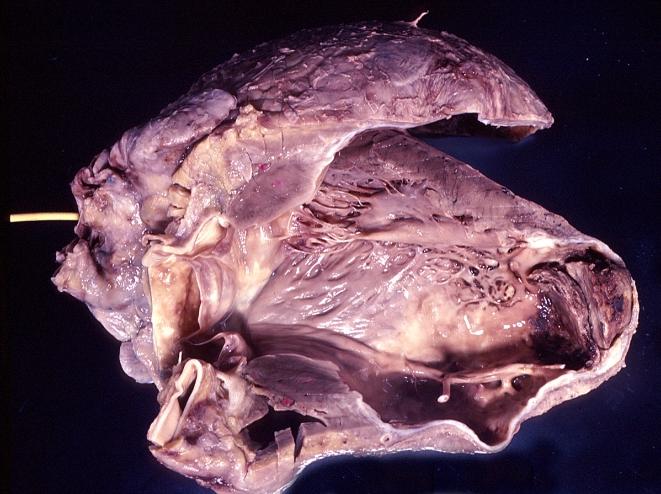 |
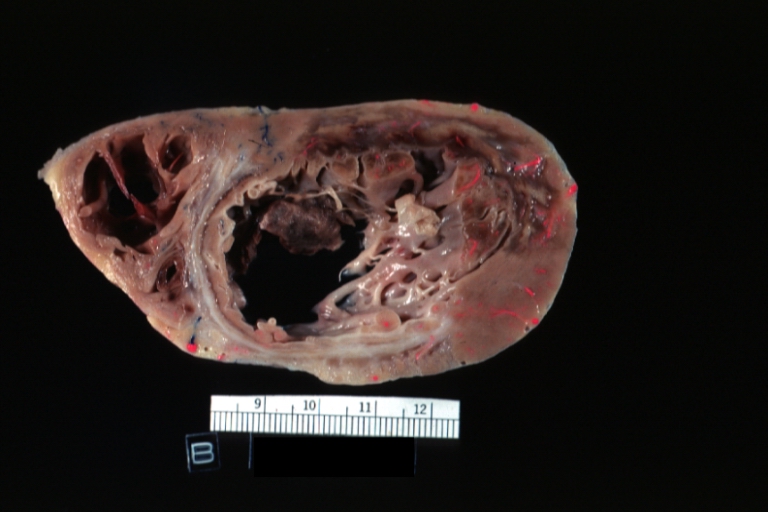 |
